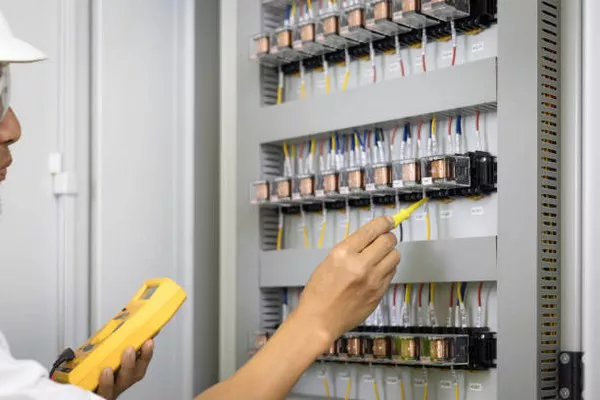Electricity is the lifeblood of modern civilization, powering everything from homes and industries to transportation and communication systems. While we often take it for granted, the process of generating and delivering electricity involves a complex infrastructure that includes various components designed to efficiently transfer electrical energy. One crucial element in this process is the electric transformer. This article delves into the mechanics, types, and significance of electric transformers in the modern world.
The Basics of Electric Transformers
At its core, an electric transformer is a device that transfers electrical energy between two or more circuits through electromagnetic induction. It primarily consists of two coils of wire, known as the primary coil and the secondary coil, wound around a shared magnetic core. These coils are often referred to as the primary winding and the secondary winding.
The primary coil is connected to the power source, and it generates an alternating current (AC) that creates a changing magnetic field around the coil. This changing magnetic field, in turn, induces an electromotive force (EMF) in the secondary coil, causing a current to flow in the secondary circuit. The transformation of voltage and current between the primary and secondary coils occurs in accordance with the transformer’s turns ratio—the ratio of the number of turns in the secondary winding to the number of turns in the primary winding.
See Also: Exploring the Essentials: Where to Find Doorbell Transformers
Types of Transformers
Electric transformers come in various types, each tailored for specific applications based on voltage requirements, power capacities, and usage scenarios. Some common types include:
1. Step-Up Transformer:
This type of transformer increases the voltage from the primary to the secondary side, enabling efficient long-distance transmission of electricity. Step-up transformers are used at power plants to raise the generated voltage for distribution across the electrical grid.
2. Step-Down Transformer:
In contrast to the step-up transformer, a step-down transformer reduces the voltage from the primary to the secondary side. These transformers are employed at substations to lower the voltage to a level suitable for commercial and residential use.
3. Isolation Transformer:
Isolation transformers are designed to electrically isolate the primary and secondary circuits. They are commonly used to provide electrical safety by preventing direct contact between the input and output circuits.
4. Auto Transformer:
An auto transformer has a single winding that serves both as the primary and secondary winding. It can be used to step up or step down the voltage and is often utilized in applications where size and weight are critical factors.
5. Distribution Transformer:
These transformers are commonly found on utility poles and provide the final voltage reduction for residential and commercial use. They play a vital role in ensuring electricity reaches end-users at appropriate voltage levels.
6. Instrument Transformer:
Instrument transformers, including current transformers and voltage transformers, are used to provide accurate measurements of current and voltage in high-voltage systems, making it easier to monitor and control power flow.
Significance and Impact of electric transformers
Electric transformers serve as indispensable components within the modern electrical infrastructure, facilitating the efficient generation, transmission, and distribution of electricity. Here are a few key reasons why electric transformers are of paramount importance:
1. Voltage Transformation:
Electric transformers enable the efficient transfer of electricity over long distances by adjusting the voltage levels to minimize energy losses. This is crucial for transmitting power generated at power plants to areas far away from the generation source.
2. Energy Efficiency:
Through the process of electromagnetic induction, transformers facilitate the transfer of electrical energy with minimal energy losses. This plays a significant role in conserving resources and reducing the environmental impact of energy generation.
3. Electrical Safety:
Isolation transformers provide a barrier between the input and output circuits, reducing the risk of electric shock and enhancing overall safety in various applications.
4. Infrastructure Optimization:
Transformers allow electricity to be distributed and utilized at different voltage levels, optimizing the infrastructure for various purposes. This flexibility is crucial for accommodating diverse consumer needs.
5. Industrial and Commercial Applications:
Transformers are integral to a wide range of industries, including manufacturing, mining, and transportation. They power machinery, equipment, and systems that drive economic activities.
6. Renewable Energy Integration:
As renewable energy sources like solar and wind power become more prevalent, transformers play a pivotal role in integrating these intermittent sources into the grid. They help manage voltage fluctuations and ensure a stable power supply.
Challenges and Future Trends of electric transformers
While electric transformers have revolutionized the way we generate and distribute electricity, there are still challenges and emerging trends that warrant attention:
Aging Infrastructure: Many transformers in use today are aging and may require maintenance or replacement. Ensuring the reliability of the electrical grid demands proactive strategies for managing aging infrastructure.
Smart Grid Integration: The concept of smart grids involves the integration of advanced sensors, communication technologies, and automation to enhance grid efficiency and responsiveness. Transformers equipped with smart monitoring capabilities can provide real-time data for predictive maintenance and better energy management.
Energy Storage: As energy storage technologies like batteries become more prevalent, transformers will play a role in connecting these storage systems to the grid, enabling efficient energy dispatch and grid stability.
Efficiency Enhancements: Ongoing research focuses on improving transformer design to minimize energy losses even further. Materials with improved magnetic properties and innovative cooling techniques are being explored to enhance overall efficiency.
Conclusion
Electric transformers stand as the silent heroes of the modern electrical ecosystem. Their ability to transform voltage levels, ensure energy efficiency, and support various industries and applications is truly remarkable. As we continue to advance in technology and embrace cleaner energy sources, transformers will evolve to meet new challenges and play a pivotal role in shaping the future of power distribution and consumption. Understanding the significance of these unassuming devices helps us appreciate the complexity and ingenuity that underlie the electrified world we live in today.

